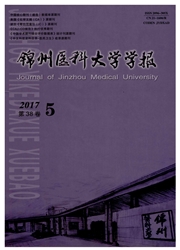

 中文摘要:
中文摘要:
目的通过皮褶厚度测量法和生物电阻抗法来测量体脂率,研究和探讨拉萨藏族儿童青少年身体脂肪分布特点和规律,分析不同评价方法对于儿童青少年体脂率推测结果的差异。方法选取拉萨市中小学校学生1204名(男588名,女616名)作为研究对象,分别使用皮褶厚度法、生物电阻抗法对同一受试者各项指标进行测量,所得原始数据录入SPSS统计分析软件进行统计分析处理。结果不同性别、不同年龄段身体各部脂肪含量所占比例不同,随着年龄增长,拉萨藏族女性儿童青少年的各部皮褶厚度、身体各部脂肪含量及体脂率明显大于同年龄段男性。男性的脂肪更容易蓄积在躯干,而女性的脂肪较为均匀的分布在躯干和四肢。结论皮褶厚度法及BIA法各测量指标间存在明显的相关性,两种方法对体脂含量变化趋势及脂肪分布规律的分析具有一致性。
 英文摘要:
英文摘要:
Objective To measure the body fat rate of Tibetan adolescents' in Lhasa by adopting method of skin fold measurement and bioelectrical impedance analysis. Thus we can study and discuss characteristics and patterns of their body fat distribution, and analyze the differences of speculative results when using different evaluation methods. Also, this study can provide methodology basis for seeking simple, effective and accurate evaluation means to measure body fat and body fat rate of child and adolescent. Methods On the basis of informed consent, 1 204 students ( male 588, female 612 ) were randomly selected from the primary and secondary schools in Lhasa Tibet as the research objects. We measured all the re- lated indicators of the same subject with two methods, the skinfold - thickness measurement and bioelectrical impedance a- nalysis, and then the initial data were put into SPSS statistical analysis software for statistical analysis. Results As for Ti- betan children and adolescents in Lhasa, their fat content of body parts was diverse with different gender and different age group. As they grew older, within the same age group, the skinfold thickness, fat mass and body fat rate of females tended to be high compared with that of males. Also, males were more likely to accumulate fat in their trunk, while females tended to distribute fat evenly in their trunk and limbs. Conclusion For females, there is difference between the mean value of body fat rate detected by BIA measurement and mean value calculated by skinfold thickness, while the two methods showed consistency in the variation tendency of content of body fat and the pattern of fat distribution.
 同期刊论文项目
同期刊论文项目
 同项目期刊论文
同项目期刊论文
 Quantitative Analysis and Comparison of BMI among Han, Tibetan, and Uygur University Students in Nor
Quantitative Analysis and Comparison of BMI among Han, Tibetan, and Uygur University Students in Nor 期刊信息
期刊信息
